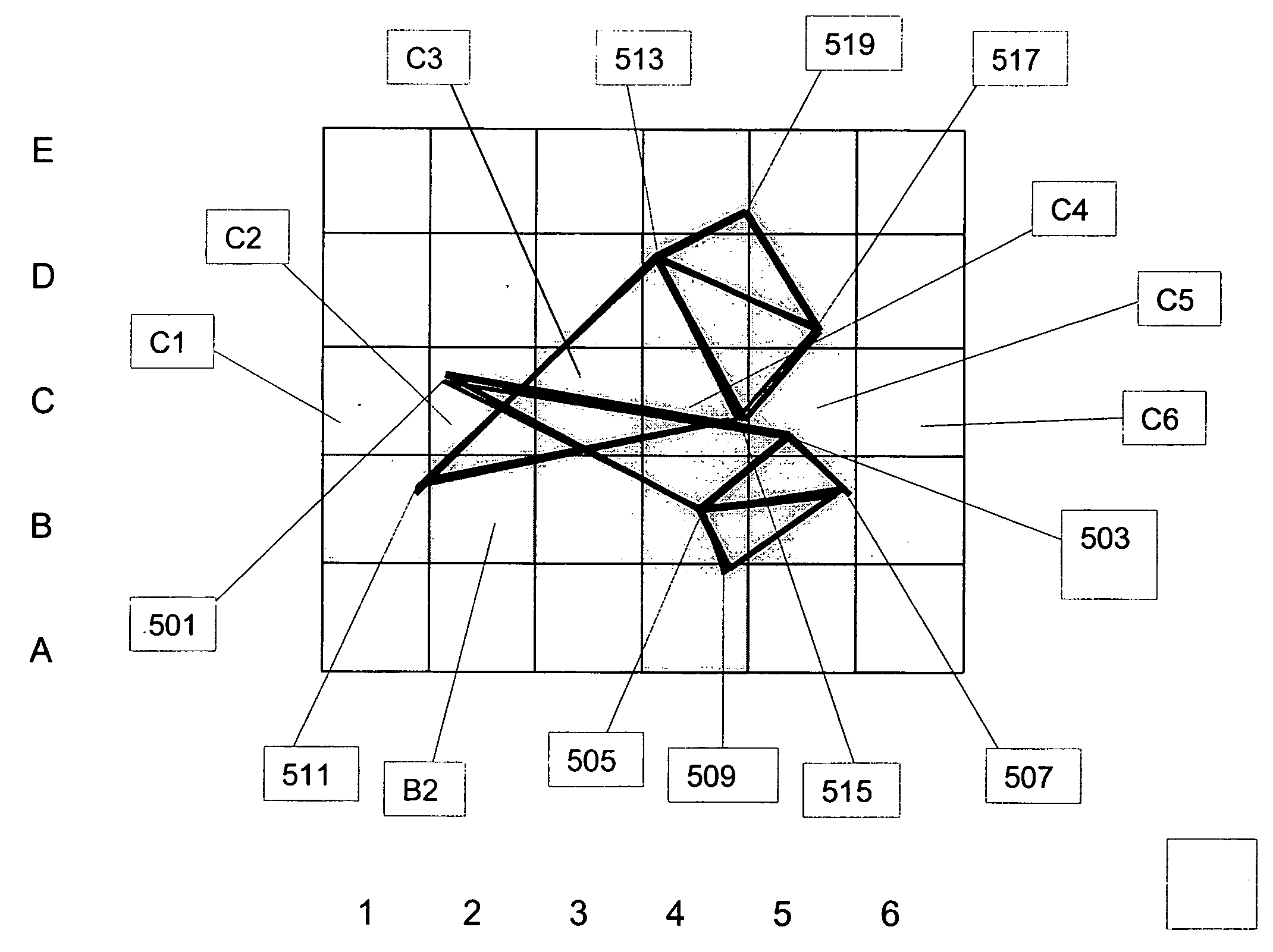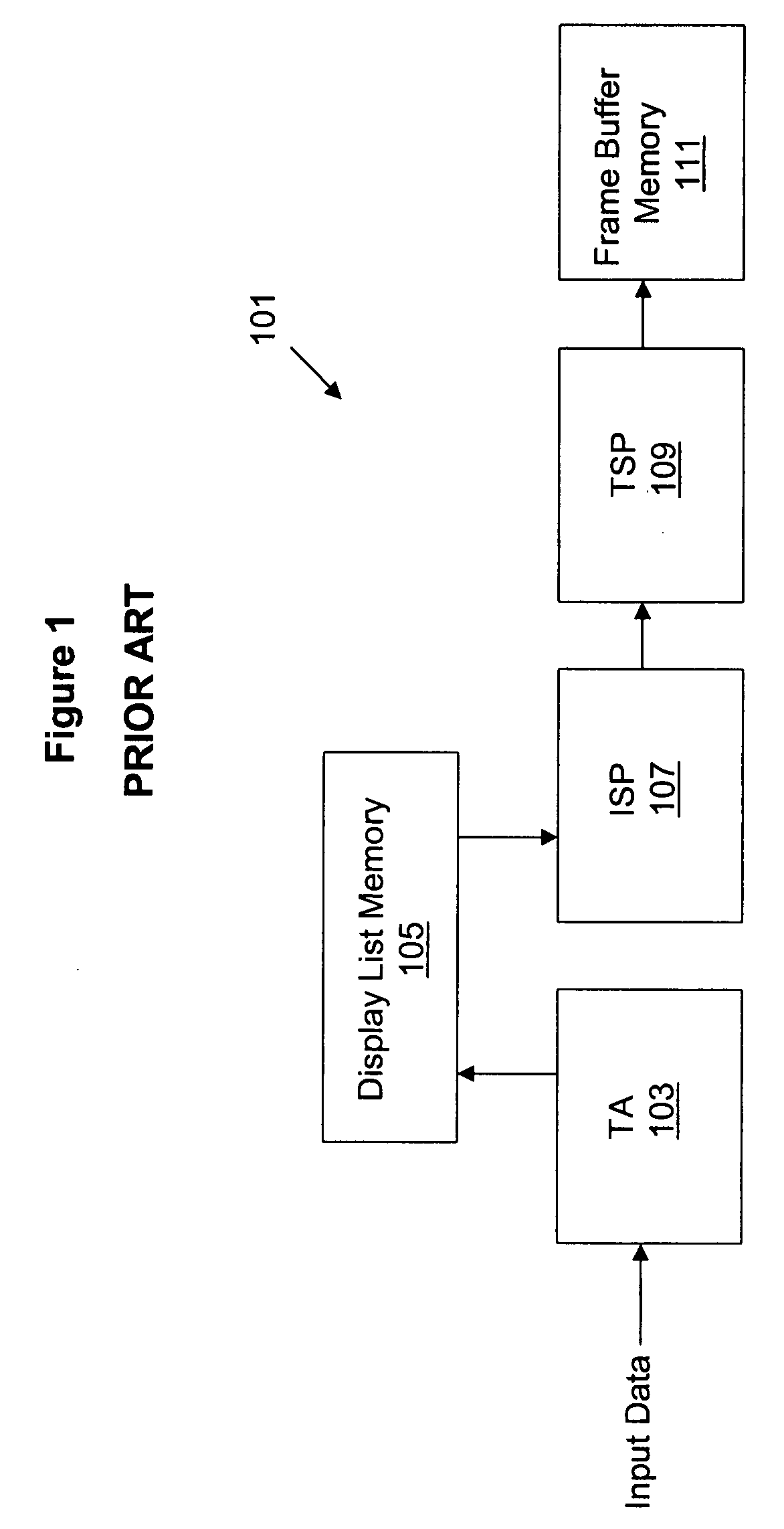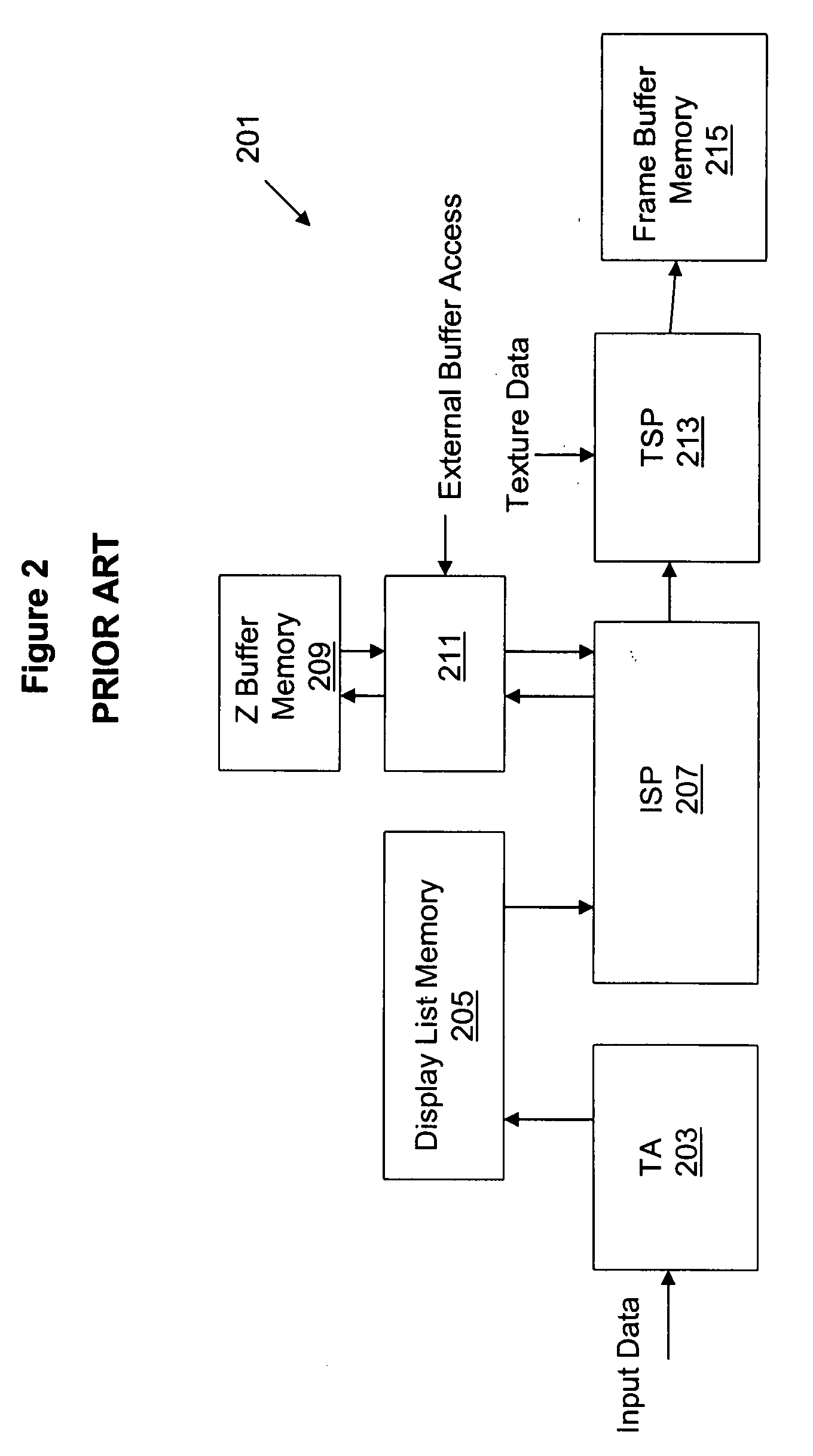Methods and systems for generating 3-dimensional computer images
a computer image and computer image technology, applied in the field of methods and systems for generating 3dimensional computer images, can solve the problems of increased storage requirements, scene may simply not be rendered, complex scene to be rendered, etc., and achieve the effect of improving memory usage and reducing wastag
- Summary
- Abstract
- Description
- Claims
- Application Information
AI Technical Summary
Benefits of technology
Problems solved by technology
Method used
Image
Examples
first embodiment
[0125]This arrangement of the third aspect of the invention provides two embodiments for solving this problem. The first embodiment proposed allows two memory pages to be allocated by the MTE for a primitive object. Thus, a particular primitive object can span two memory pages. So, when the primitive objects are written into the memory by the MTE, at the start, the memory manager allocates two pages of the memory to that macro-tile. (If it turns out that only one page is actually needed, the second page is simply used in the next write.) For all primitive objects, the number of vertices and primitives, together with the memory addresses of the primitive objects—vertex pointers—are sent to the TE to be added into the control stream of the tiles in which the primitive objects are visible. When the MTE is continuously writing primitive object data into the memory, it checks whether the memory write is going to span a page boundary. If the write will be contained within one memory page,...
second embodiment
[0129]The second embodiment proposed provides the Dynamic Parameter Management (DPM) with additional logic to guarantee that the pages are contiguous, and an additional small cache. If the pages are guaranteed to be contiguous, it is acceptable for the write for a given macro tile to span two pages.
[0130]In order to keep the pages allocated to each macro tile, when the MTE is writing, contiguous, the DPM maintains a look-up table page or pages, a portion being allocated for each macro tile. The pages allocated to the MTE are contiguous indexes in the look up table rather than contiguous memory page addresses. For each macro tile, there is a portion in the look-up table which provides pointers to the actual memory pages where the data is written. The portions in the look-up table are contiguous; this is achievable since they are allocated by the DPM at the start.
[0131]A counter is maintained in the DPM, for each macro tile (and the global list if being used) for page allocation to th...
PUM
 Login to View More
Login to View More Abstract
Description
Claims
Application Information
 Login to View More
Login to View More - R&D
- Intellectual Property
- Life Sciences
- Materials
- Tech Scout
- Unparalleled Data Quality
- Higher Quality Content
- 60% Fewer Hallucinations
Browse by: Latest US Patents, China's latest patents, Technical Efficacy Thesaurus, Application Domain, Technology Topic, Popular Technical Reports.
© 2025 PatSnap. All rights reserved.Legal|Privacy policy|Modern Slavery Act Transparency Statement|Sitemap|About US| Contact US: help@patsnap.com



